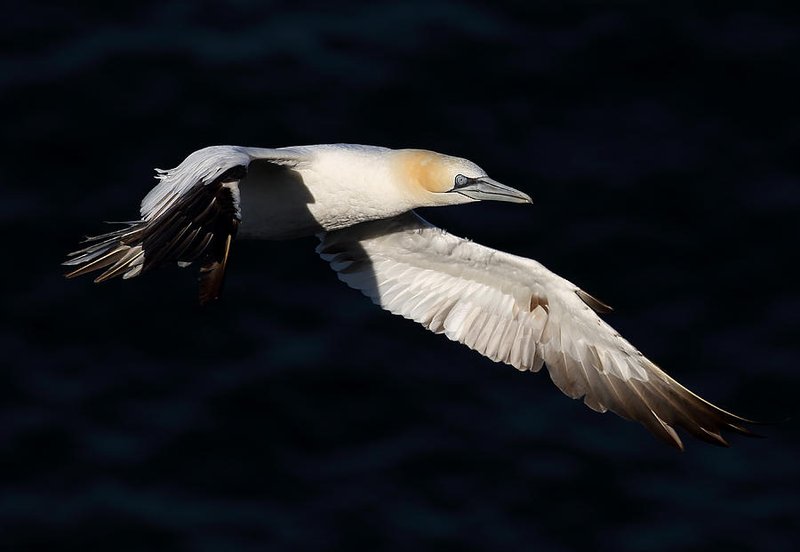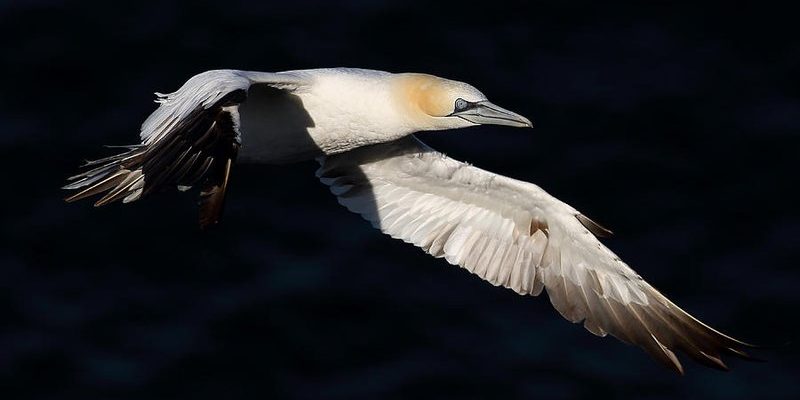
You might be wondering, what exactly is a gannet? These remarkable birds are known for their striking appearance and impressive diving abilities. Belonging to the family Sulidae, gannets are large seabirds that spend most of their lives soaring over the ocean. They have long wings, streamlined bodies, and a distinctive white plumage with black-tipped wings. With their sharp bills, they are expert fishermen, diving into the water to catch fish with incredible precision. They are truly a sight to behold!
Imagine standing by the coast and watching these birds dive into the ocean from great heights, hitting the water like a spear. They can plunge into the water at speeds of up to 60 miles per hour! Gannets are not only beautiful; they are fascinating creatures displaying remarkable adaptations to their marine environment.
Types of Gannets
There are three main species of gannets: the Northern gannet, the Cape gannet, and the Australasian gannet. Each of these species has unique characteristics and habitats, but they all share the same incredible diving abilities. The Northern gannet is the most widespread and can be found in the North Atlantic, particularly around the coasts of Canada and Europe.
On the other hand, the Cape gannet is native to the southern Atlantic, primarily found in South Africa. This species has a slightly smaller size and distinctive yellowish coloration on its head. The Australasian gannet, found in waters around New Zealand and Australia, has a similar appearance to the Northern gannet but is adapted to a different habitat. Understanding these species helps highlight the diversity within the gannet family.
Physical Characteristics
When you look at a gannet, the first thing you might notice is its size. Adult gannets can weigh anywhere from 5 to 8.5 kilograms (11 to 19 pounds) and have wingspans of about 1.5 to 2 meters (5 to 6.5 feet). Their bodies are designed for aerial acrobatics, making them exceptional flyers. The combination of their long wings and compact bodies allows them to glide effortlessly over the ocean, conserving energy as they search for food.
Another striking feature of gannets is their plumage. They are mostly white, which helps them blend in with the foamy sea when flying above it. Their heads are adorned with a striking golden hue, particularly during the breeding season when they are looking for mates. The contrast of their white bodies and black-tipped wings makes them easily recognizable in the wild.
Habitat and Distribution
Gannets are typically found in coastal regions, where they build their nests on cliffs or rocky islands. These locations provide them with safe breeding grounds and easy access to the ocean for hunting. Northern gannets, for example, are commonly seen on islands like Bonaventure Island in Canada and the Farne Islands in the UK.
During non-breeding seasons, gannets may migrate and are often seen far out at sea, sometimes traveling hundreds of kilometers from their nesting sites. Their ability to fly long distances in search of food is a crucial survival skill, allowing them to thrive in various marine environments.
Diet and Feeding Behavior
Gannets are carnivorous birds, primarily feeding on fish like herring, mackerel, and sardines. Their hunting technique is quite spectacular—when they spot a school of fish from the air, they don’t just hover; they dive into the water from impressive heights. This dive is known as “plunge diving,” and it allows them to capture their prey with speed and agility.
It’s interesting to note that gannets can dive to depths of up to 30 meters (nearly 100 feet) in pursuit of their meals. These birds have special air sacs in their bodies that help absorb the shock of hitting the water at such high speeds, making their dives efficient and effective for catching fish. They typically hunt in groups, often with other seabirds, to take advantage of cooperative hunting strategies.
Breeding and Nesting
Breeding season for gannets typically occurs in the spring and summer. During this time, they return to their nesting colonies, which can be quite large, sometimes housing thousands of birds. The colonies are usually located on steep cliffs or rocky outcrops that provide some protection from predators.
Once they arrive, gannets perform elaborate courtship displays to attract mates. These displays often include synchronized flying and mutual preening, which strengthens pair bonds. After forming a pair, gannets will build nests made of seaweed, grass, and other materials found nearby. The female usually lays one or two eggs, which both parents take turns incubating.
Conservation Status
While many gannet populations are stable, some face threats due to habitat loss, climate change, and overfishing. Changes in ocean temperatures can affect fish availability, which can impact gannet feeding patterns. Additionally, human activities can disrupt nesting colonies, making conservation efforts crucial for sustaining these beautiful seabirds.
Organizations around the world are working to protect gannets and their habitats. Conservation measures include creating protected areas, regulating fishing practices, and raising awareness about the importance of preserving marine ecosystems. It’s vital for us to support these efforts if we want to ensure that future generations can enjoy the sight of gannets diving gracefully into the ocean.
Interesting Facts About Gannets
| Species: | Northern, Cape, Australasian |
| Wingspan: | 1.5 to 2 meters (5 to 6.5 feet) |
| Weight: | 5 to 8.5 kilograms (11 to 19 pounds) |
| Diving Speed: | Up to 60 miles per hour |
| Diet: | Mainly fish (herring, mackerel, sardines) |
| Breeding Locations: | Coastal cliffs, rocky islands |
| Conservation Status: | Varies by species (some are threatened) |
Why Are Gannets Important?
Gannets play a significant role in marine ecosystems. As skilled hunters, they help control fish populations. Their presence can indicate the health of marine environments. When gannet populations are thriving, it’s often a sign of a balanced ecosystem. Conversely, a decline in their numbers can signal larger environmental issues that may affect other wildlife and human communities.
Additionally, gannets are part of cultural heritage in many coastal regions. They attract birdwatchers and nature enthusiasts, contributing to local economies through eco-tourism. By protecting gannets and their habitats, we also safeguard the rich biodiversity of our oceans.
FAQ
Where can I see gannets in the wild?
If you’re looking to catch a glimpse of gannets, popular spots include islands like Bonaventure Island in Canada and the Farne Islands in the UK. These locations are known for their large gannet colonies, especially during the breeding season when the birds are most active.
How do gannets care for their young?
Both parent gannets share the responsibility of caring for their young. After the eggs hatch, they feed their chicks regurgitated fish. The chicks grow quickly, and both parents take turns keeping them warm and safe until they are ready to fledge, usually after about 12 weeks.
Why do gannets dive from such great heights?
Diving from great heights allows gannets to maximize their speed and reach deeper waters in search of fish. The force of the dive enables them to catch their prey more effectively. This impressive ability is a vital adaptation that helps them thrive in their marine environment.
Are gannets social birds?
Yes, gannets are highly social and often hunt and nest in large colonies. Their social behavior helps them find food more efficiently and provides protection against potential predators. The vibrancy and activity of a gannet colony can be quite a spectacle!
What challenges do gannets face today?
Gannets face several challenges, including habitat loss due to human development, climate change affecting food availability, and overfishing that depletes their primary food sources. Conservation efforts are essential to address these issues and ensure their continued survival.
Do gannets migrate?
While gannets do not migrate in the traditional sense, they may travel significant distances from their nesting sites during the non-breeding season in search of food. They can cover vast areas across the ocean, following schools of fish.
How long do gannets live?
In the wild, gannets can live up to 15 years or more. Factors like food availability, predation, and environmental conditions can influence their lifespan. Captive gannets have been known to live even longer due to the absence of natural threats.
What do gannets do when they’re not hunting?
When not hunting, gannets engage in social activities such as grooming, displaying courtship behaviors, and resting. They often gather in large groups on cliffs or beaches, providing a fascinating glimpse into their social lives when they’re not soaring over the sea.
Can gannets be found in freshwater?
No, gannets are strictly marine birds. They are highly adapted to life in saltwater environments and rely on fish as their primary food source. Freshwater bodies are not suitable habitats for them due to the lack of food and appropriate nesting sites.
Are gannets endangered?
Some species of gannets are considered vulnerable or threatened, primarily due to habitat loss, climate change, and overfishing pressures. Efforts to conserve their populations and habitats are necessary to help maintain healthy gannet populations around the world.

